Deciding what to wear to the gym can be a surprisingly complex task. It’s not just about looking good, but also about ensuring you’re dressed appropriately for your workout, maximizing performance, and adhering to the gym’s etiquette. In this comprehensive guide, we’ll delve deep into the various aspects of gym attire, helping you make informed decisions that combine functionality with style. From the importance of understanding your workout to the debate between tight vs. loose clothing, we’ve got you covered. Let’s dive in!
Table of Contents
Choosing What to Wear to the Gym
Before stepping foot in the gym, it’s important to understand the nature of your workout. The right attire can make a significant difference in your performance, comfort, and safety. From the intensity of the exercise to the specific type of activity you’ll be engaging in, what you wear to the gym is more than just a fashion statement; it’s a practical consideration.
1. Type of Exercise:
Your choice of gym wear largely depends on the kind of exercise you plan to do. For instance, yoga requires stretchy, comfortable clothes that allow for a full range of motion, whereas weightlifting might require more snug-fitting attire to ensure safety around equipment.
2. Intensity Level:
High-intensity workouts like spin classes or HIIT will likely result in a lot of sweating. Moisture-wicking fabrics can be a game-changer in such scenarios. On the other hand, for low-intensity workouts or strength training, you might prioritize comfort or muscle support over sweat management.
3. Gym Environment:
While most gyms are climate-controlled, understanding the environment can guide your attire choices. For instance, outdoor boot camp-style workouts might require layers in colder weather, or breathable, UV-protective gear in the sun.
4. Personal Comfort and Confidence:
Regardless of the workout type, feeling confident in your gym wear is crucial. What makes one person feel great might make another feel self-conscious. Prioritize your comfort and confidence when deciding what to wear, and remember that it’s okay to adjust based on what makes you feel your best.
5. Function Over Fashion:
While there’s no harm in looking stylish at the gym, functionality should come first. Pockets might be handy for those who like to keep their phone or keys on them. Reflective gear might be necessary for those who jog outside early in the morning or late at night. Always consider the practical aspects of your gym wear.
In conclusion, knowing what to wear isn’t just about following trends. It’s about understanding your workout, knowing the requirements of each activity, and ensuring that you’re dressed in a way that optimizes performance while ensuring safety and comfort.
Optimal Choices for Every Activity
When considering what to wear to the gym, functionality should always be a top priority. With the plethora of options available in the market, understanding the specific features and benefits of different types of gym wear can assist in making the best choices for your fitness journey.
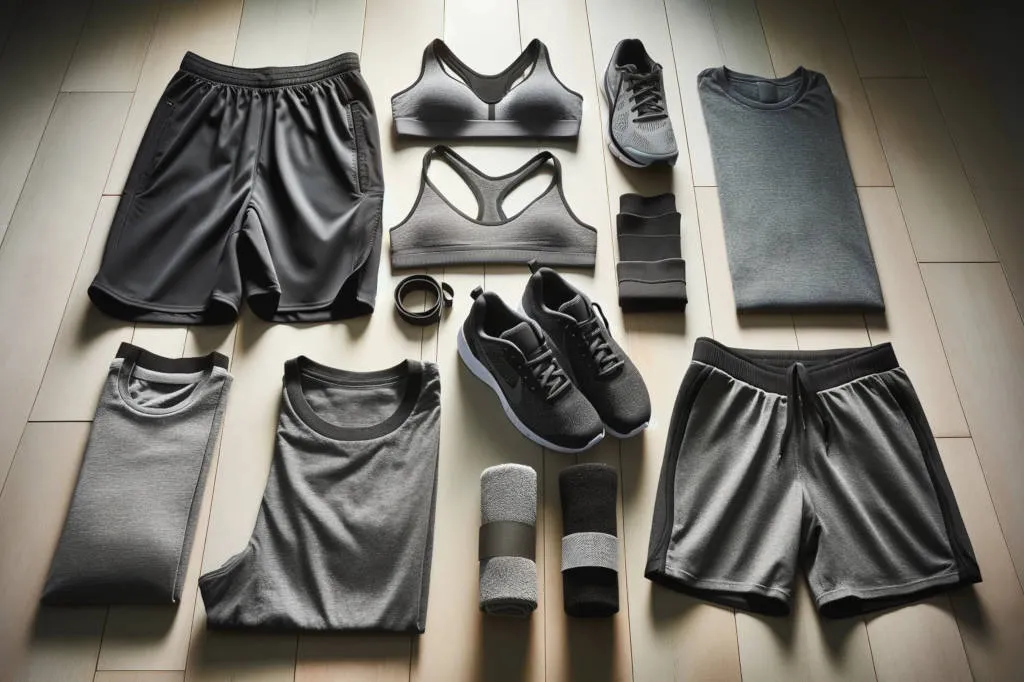
1. Moisture-Wicking Fabrics:
These are a must for anyone engaging in activities that involve a lot of sweating. Such fabrics pull moisture away from the body, ensuring that you remain dry and comfortable throughout your workout.
2. Compression Gear:
Perfect for those involved in high-intensity training or weightlifting, compression clothing can improve circulation and reduce muscle soreness. Whether it’s leggings, socks, or arm sleeves, these items snugly wrap around your body parts offering support and stability.
3. Breathable Mesh:
Certain areas of the body tend to heat up more than others during workouts. Gym wear with breathable mesh panels, especially around the armpits, back, and inner thighs, can provide ventilation, keeping you cool.
4. Padded Protection:
For activities like cycling or certain weightlifting exercises, padding can be a lifesaver. Padded shorts for spin classes or gloves for lifting can protect your skin and enhance grip.
5. Flexible and Stretchable Materials:
Yoga, Pilates, and dance workouts require a full range of motion. Ensure your gym wear for these activities is stretchy and allows for free movement without restrictions.
6. Pockets and Storage:
For those who like to track their workouts on their phones or listen to music, having pockets can be extremely beneficial. Some leggings even come with hidden pockets for keys or small valuables.
7. Reflective Gear:
If you’re someone who enjoys early morning jogs or late evening runs, having reflective strips or patches on your attire is crucial for visibility and safety.
In conclusion, when deciding what to wear, it’s essential to prioritize function over fashion, though the two can often go hand-in-hand. Investing in high-quality, functional gym wear can not only enhance your performance but also ensure that you have a comfortable and safe workout experience.
Footwear Essentials
Selecting the right footwear is just as crucial as choosing the right gym attire. Your shoes are not merely a fashion statement; they provide the necessary support, grip, and comfort to make the most out of your workouts. Here’s a breakdown of footwear:

1. Cross Trainers:
A versatile choice, cross trainers are suitable for a variety of gym activities, from aerobics to weightlifting. They provide ample cushioning, stability, and lateral support for multidirectional movements.
2. Running Shoes:
Designed primarily for forward motion, these are perfect for treadmills, jogging, or any running-focused activities. They offer shock absorption and are lightweight, reducing the stress on your feet and joints.
3. Weightlifting Shoes:
For those dedicated to lifting, these shoes are a game-changer. With a raised heel and solid base, they allow for better squat depth and stability.
4. Flat-soled Shoes:
Ideal for deadlifting, these give better ground contact and stability, ensuring that power is not lost in the cushioning of the shoe.
5. Grip-enhanced Footwear:
Activities like rock climbing or certain floor exercises demand shoes with enhanced grip to prevent slipping.
6. Breathability:
Make sure your gym shoes have breathable material. Sweat accumulation can lead to discomfort, bad odor, and fungal infections.
7. Specialized Footwear:
Sports like basketball or racquetball have unique requirements. High-top sneakers can provide ankle support, which is crucial for sports that involve jumping and swift lateral movements.
8. Shoe Inserts and Orthotics:
For those with specific foot conditions or arch types, customized shoe inserts can provide additional support and comfort.
In conclusion, footwear is an essential component. The right shoes not only boost performance but also protect against potential injuries. It’s an investment in your health and safety, so choose wisely!
Dressing for Cardio
When deciding what to wear during workout, especially for cardio-intensive exercises, comfort, and functionality are of paramount importance. The right attire can make the difference between a productive session and one where you’re distracted by discomfort. Here’s how to dress for maximum efficiency during cardio workouts:
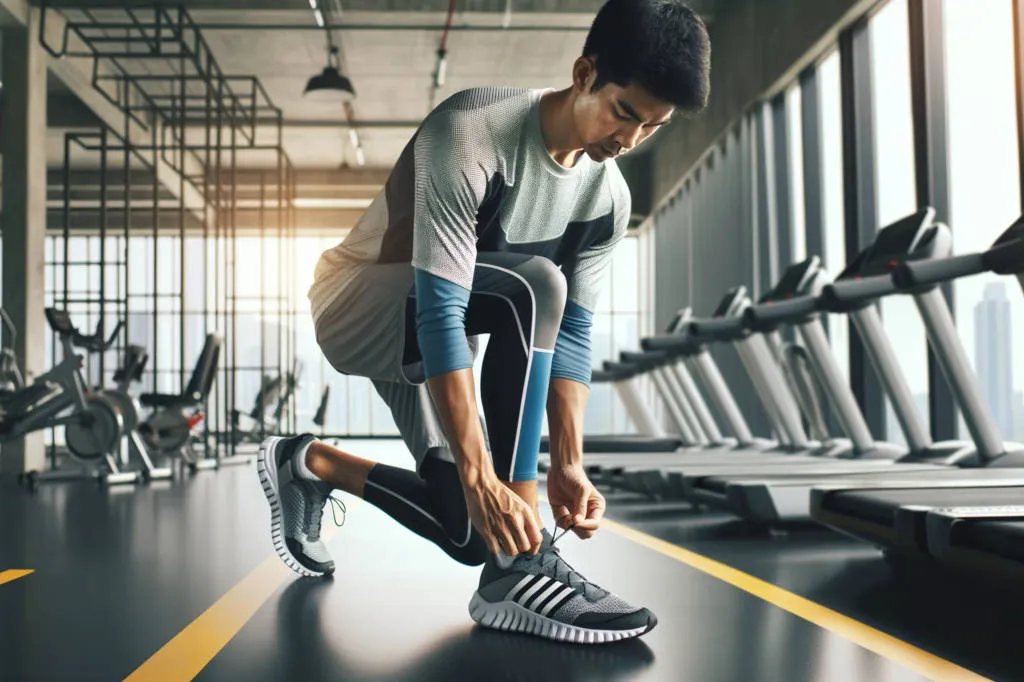
1. Moisture-wicking Fabrics:
Choose materials that pull sweat away from your body. This prevents chafing and keeps you cool during intense sessions. Materials like polyester or polypropylene are great for this.
2. Lightweight Layers:
Layering allows you to adjust your clothing based on your body’s temperature and workout intensity. Start with a moisture-wicking base layer, and consider adding a breathable, lightweight jacket or hoodie that can easily be removed.
3. Fitted Shorts/Leggings:
Opt for shorts or leggings that are snug but not restrictive. This ensures that they don’t get caught in machines or flap around during high-paced activities.
4. Breathable Tops:
Mesh panels, back vents, or strategically placed perforations can enhance airflow, helping you stay cool.
5. Supportive Sports Bras:
For women, a high-impact sports bra is crucial during cardio to ensure comfort and support.
6. Minimal Accessories:
Avoid bulky or dangling jewelry. Instead, go for sweatbands, silicon rings, or specialized fitness wearables.
7. Compression Gear:
Some athletes swear by compression socks or sleeves, claiming they boost circulation and reduce muscle fatigue.
8. Socks Matter:
Never overlook the importance of a good pair of socks. Opt for ones made from synthetic fibers over cotton to prevent blisters and wick away sweat.
In summary, it’s all about merging comfort with functionality. The right choices will ensure you stay focused on your workout, free from unnecessary distractions or discomfort.
Dressing for Strength Training
Strength training demands a different set of considerations compared to cardio when deciding what to wear during a workout. You’ll need to prioritize range of motion, support, and safety. Here’s a breakdown of how to choose the best attire for your lifting sessions:
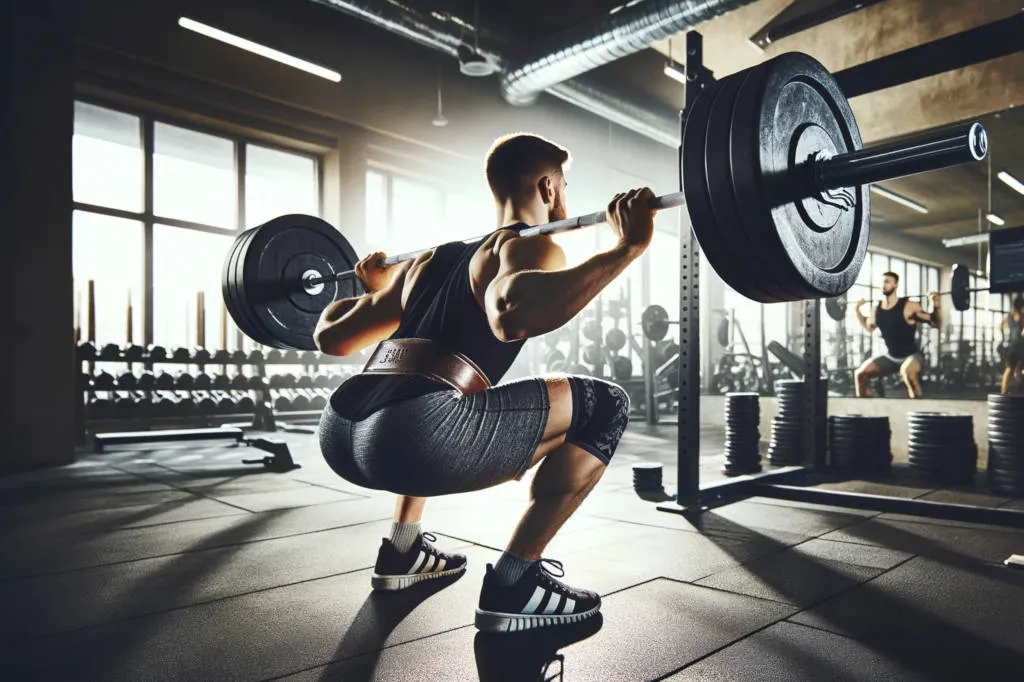
1. Stability Shoes:
For activities like squats or deadlifts, flat-soled shoes are essential. They provide a stable base, ensuring you have better ground contact, balance, and power distribution.
2. Durable and Flexible Fabric:
Opt for durable materials that can withstand the wear and tear of barbell contact. Additionally, the fabric should allow free movement for exercises like lunges, squats, and overhead presses.
3. Fitted Clothing:
Too loose can get caught in machinery, but too tight may restrict movement. Find that sweet spot where the clothing is snug yet comfortable.
4. Padded Gloves:
If you’re prone to calluses or find that certain equipment hurts your hands, padded gloves can offer protection and better grip.
5. Weightlifting Belts:
For those lifting heavy, a belt can provide additional lumbar support, helping maintain a safe posture during exercises like deadlifts or squats.
6. Knee and Wrist Wraps:
For added support and stability, especially during heavy lifting, consider incorporating wraps.
7. Breathable Tops:
Even though strength training may not produce as much sweat as cardio, it’s still crucial to wear breathable fabrics to keep cool during intense sets.
8. Tank Tops vs. T-Shirts:
While this comes down to personal preference, some lifters prefer tank tops for exercises like bench presses to monitor their form better. Others opt for t-shirts to prevent the barbell from rubbing directly against the skin.
In essence, when determining what to wear for strength training, it’s all about balancing functionality, safety, and comfort. Equipping yourself with the right gear not only enhances performance but also ensures that you’re training effectively without risk of injury.
Yoga and Flexibility Workouts
Embracing the spiritual and physical journey of yoga and flexibility exercises requires not just inner peace but also the right attire. Ensuring you’re dressed comfortably can significantly enhance your ability to stretch, balance, and meditate. Let’s explore what to wear at the gym or studio for these practices:

1. Stretchy Leggings or Yoga Pants:
The primary aim during yoga and flexibility workouts is to achieve a full range of motion. Opt for non-restrictive bottoms like stretchy leggings or yoga pants. They should contour to your body’s shape while allowing fluid movement.
2. Fitted Tops:
A fitted tank top or t-shirt is ideal. You don’t want your top falling over your head during poses like downward dog. If you’re wearing something a bit loose, ensure it can be tucked in.
3. Breathable Materials:
Fabric that wicks away moisture and allows your skin to breathe is essential, especially during heated yoga sessions. Materials like cotton or specially designed synthetic blends work well.
4. Supportive Sports Bras:
For women, a comfortable, supportive sports bra is vital. It should provide support without being too constrictive, allowing for deep breaths and chest expansions.
5. Barefoot is Best:
Most yoga and flexibility routines are best done barefoot for better grip and balance. If you’re not comfortable being barefoot, consider non-slip yoga socks.
6. Headbands or Hair Ties:
Keeping your hair out of your face is essential, especially during poses that require concentration and balance. Secure any long hair with hair ties or use a headband to keep bangs or shorter strands away.
7. Layering for Comfort:
Start with a light jacket or sweater that can be easily removed. Studios or gym environments might be cooler at the beginning or end of a session.
8. Avoid Bulky or Restrictive Accessories:
Large jewelry, watches, or any accessories that can be restrictive or cause discomfort during stretches should be removed before practice.
In conclusion, the key to understanding what to wear for yoga and flexibility workouts is a blend of comfort, function, and personal style. Your attire should facilitate your practice, ensuring each session brings you one step closer to your flexibility and mindfulness goals.
Women’s Gym Wear Recommendations
When it comes to hitting the gym, dressing the part can be half the motivation. For women, selecting the right gym wear is crucial not only for aesthetic reasons but also for maximizing workout efficiency and ensuring safety. Here’s our take on what to wear to the gym, tailored especially for women:

1. Sports Bras:
A well-fitted sports bra is a game-changer. It provides the necessary support, reduces bounce during high-impact activities, and offers comfort. Choose bras with moisture-wicking properties to stay dry and comfortable.
2. Leggings:
High-rise, stretchy leggings are popular as they hug the body perfectly, allowing for a wide range of motion. Ensure they’re opaque and squat-proof!
3. Tops and Tanks:
Breathable, lightweight tanks and tops are ideal. They come in fitted or loose styles, depending on personal preference. Some feature open-back or mesh designs for added ventilation.
4. Running Shorts:
For those who prefer shorts, choose ones that have a snug underlining to prevent chafing and provide additional coverage.
5. Performance Shoes:
Depending on your workout, select shoes that offer adequate grip, support, and cushioning. Running shoes for runners, cross-trainers for aerobics, and flat-soled shoes for weightlifting.
6. Outerwear:
A breathable jacket or a hoodie is perfect for warm-ups, cool-downs, or when heading out of the gym.
7. Sweat-Wicking Socks:
Avoid blisters and dampness with socks designed to wick away sweat. They should be cushioned at the base for added comfort.
8. Functional Accessories:
Consider investing in workout gloves for weightlifting, a gym belt for heavy lifting, and a headband to keep hair away from the face.
9. Stylish, Yet Functional Gym Bags:
Choose bags with separate compartments for shoes, wet clothes, and other essentials.
10. Consider the Fabric:
Always check the material. Moisture-wicking fabrics, like synthetic blends or merino wool, can enhance workout comfort, especially during intense sessions.
In essence, understanding what to wear as a woman is about balancing function with fashion. With the right choices, you can look and feel great, boosting your confidence and potentially improving your workout performance.
Men’s Gym Wear Recommendations
For many men, the gym isn’t just a place to work out; it’s also a space where one can showcase their style. Selecting the ideal gym wear isn’t only about looking good but also ensuring maximum performance, comfort, and safety. Here’s what to wear to the gym for men, combining function with flair:
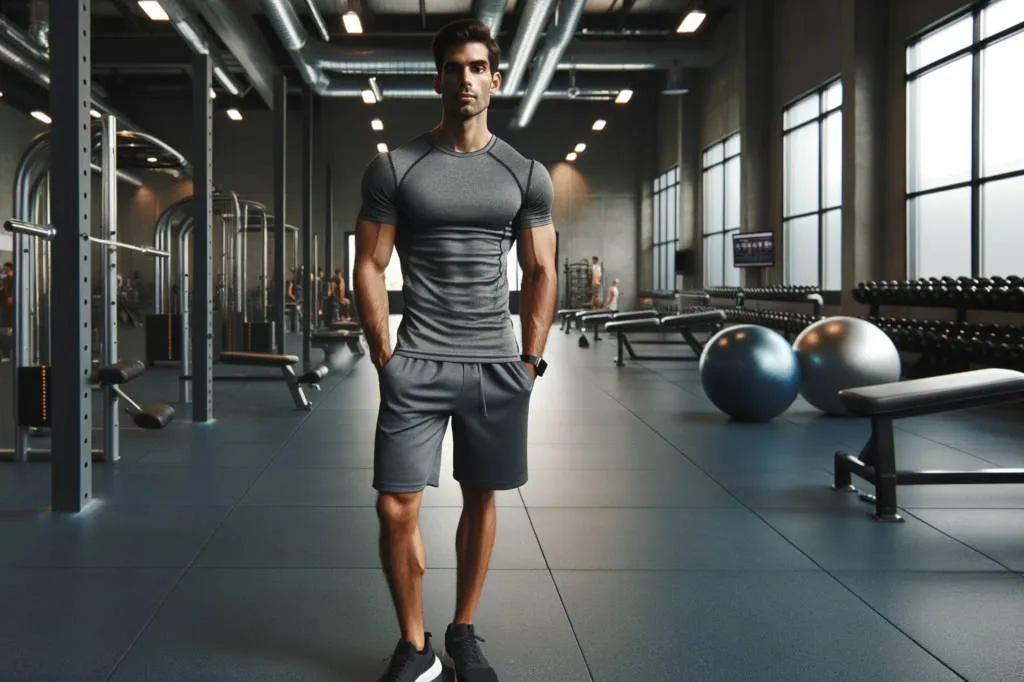
1. Moisture-Wicking T-Shirts:
These shirts are designed to draw sweat away from the body, ensuring that you remain dry even during intense workouts.
2. Athletic Shorts:
A staple for many gym-goers, they should be breathable and provide ample room for movement without being too baggy. Look for shorts with pockets if you need to store small items.
3. Compression Leggings:
For those needing muscle support and reduced chafing during long runs or high-intensity sessions, compression leggings are key.
4. Tank Tops:
Great for weightlifting or when working out in warm environments, tank tops offer breathability and showcase muscle definition.
5. Gym Trainers:
Your footwear should be activity-specific. Running shoes for treadmill sessions, cross-training shoes for varied workouts, and flat-soled shoes for lifting.
6. Hoodies and Sweatshirts:
Perfect for pre and post-workout. They help keep muscles warm and are a stylish addition to gym wear.
7. Sweat-Resistant Socks:
Just like for women, men should also opt for socks that wick away moisture, with added cushioning for comfort.
8. Workout Gloves and Gym Belts:
Workout gloves protect against calluses during weightlifting, and gym belts provide back support during heavy lifts.
9. Functional Gym Bags:
Bags with multiple compartments and breathable pockets for used gym wear can keep your gear organized.
10. Fabric Matters:
Polyester, nylon, or blends are great choices for gym wear. They’re durable, quick-drying, and provide flexibility.
In conclusion, when pondering what to wear during a workout, men should prioritize comfort, performance, and personal style. The right attire not only enhances your workout experience but also boosts confidence, pushing you towards better results.
Gym Hygiene and Clothing
It’s not just about fashion and functionality. Hygiene plays a crucial role in ensuring you and others have a pleasant workout experience. Let’s dive into the importance of choosing the right clothing for maintaining gym hygiene:
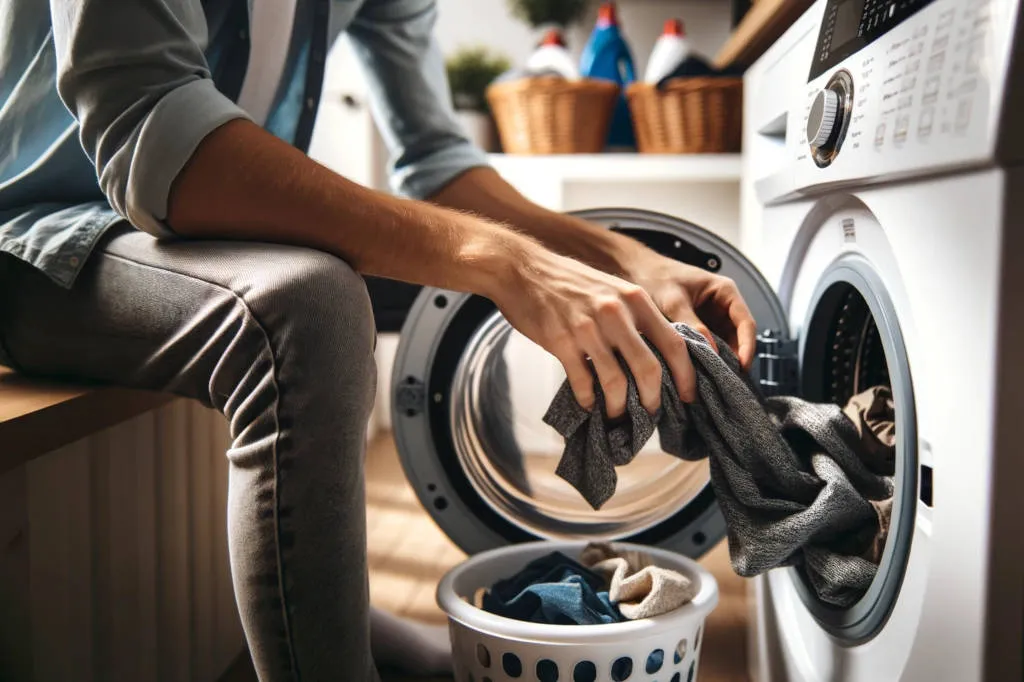
1. Breathable Materials:
Choosing gym wear made from breathable materials, like cotton or moisture-wicking fabrics, ensures sweat evaporates quickly. This helps in reducing the growth of bacteria that can cause bad odors.
2. Avoiding Skin Infections:
Sweat-soaked clothing can be a breeding ground for fungi and bacteria, leading to conditions like athlete’s foot or ringworm. Quick-drying clothes help mitigate this risk.
3. Wash After Every Use:
No matter how light your workout, always wash your gym clothes after each session. This habit will get rid of sweat, bacteria, and any gym germs your clothes might have picked up.
4. Protective Layers:
If you’re using shared gym equipment like weight benches, consider wearing full-length shirts and pants. This reduces direct skin contact and the spread of germs.
5. Change Out of Wet Clothes:
Always change out of damp gym wear as soon as possible. This not only prevents bacterial growth but also keeps skin issues at bay.
6. Proper Footwear:
Closed shoes protect your feet from fungal infections common in gym environments. Also, never walk barefoot, especially in locker rooms or showers.
7. Gym Bag Hygiene:
Regularly empty and clean out your gym bag. Bacteria can thrive on dirty gym wear and spread to your fresh clothes.
8. Storage Matters:
Use the gym’s provided hangers or lockers to store your clothes instead of placing them directly on the floor or benches.
9. Stay Fragrance-Free:
While it might be tempting to mask post-workout odors with perfumes or deodorants, it’s better to shower and put on clean clothes. Some gym-goers might be allergic or sensitive to strong fragrances.
Maintaining gym hygiene isn’t just about personal cleanliness. It also involves making sure what you wear to the gym is appropriate and clean. This promotes a safe, healthy, and respectful workout environment for everyone.
Accessorizing for the Gym
While the primary focus revolves around clothing and footwear, accessories play a significant role in enhancing your workout experience and showcasing your style. Here’s a guide to accessorizing for the gym:
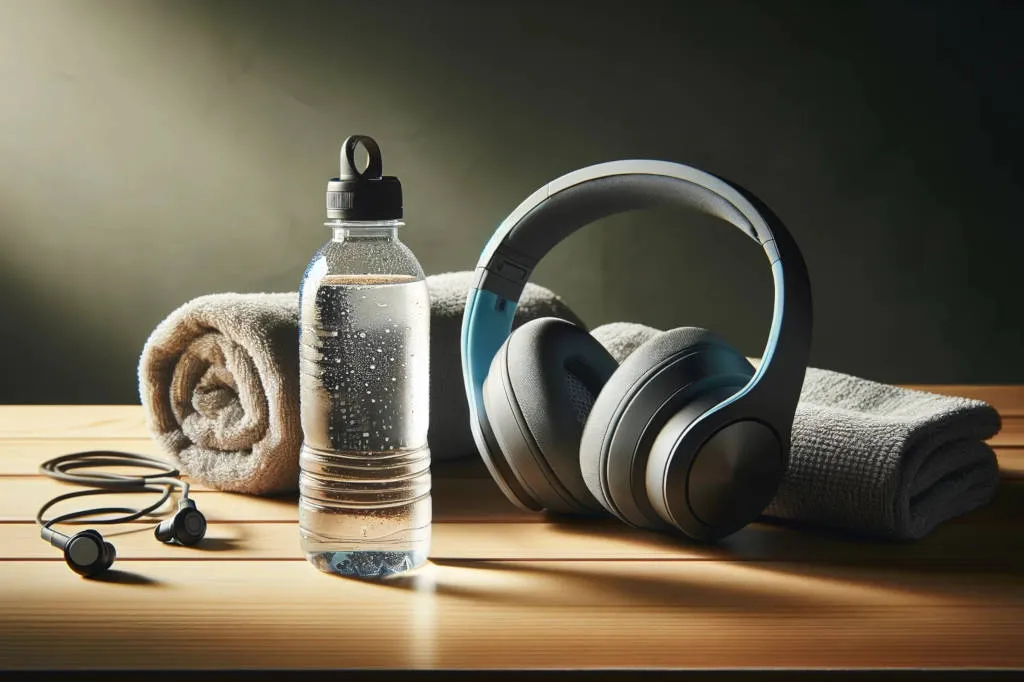
1. Headbands and Sweatbands:
Designed to keep sweat from dripping down your face and into your eyes, these come in various styles and materials. They can also be a fashion statement!
2. Gym Gloves:
Especially useful for those into weightlifting, gloves provide grip, reduce the formation of calluses, and protect against accidental pinches from equipment.
3. Fitness Trackers and Smartwatches:
These gadgets not only track your activity but can also monitor heart rate, steps, and even sleep patterns. They’re a great way to stay on top of your fitness goals.
4. Armband Phone Holders:
For those who like to listen to music or podcasts during their workout, an armband ensures your phone is secure and accessible.
5. Water Bottles:
Hydration is key! Opt for a reusable bottle that’s easy to open and close. Some advanced bottles even track your water intake.
6. Gym Bags:
Choose a size that suits your needs, with compartments for shoes, sweaty clothes, and other essentials. Backpack styles are great for those who commute on foot or bike.
7. Weightlifting Belts:
For serious weightlifters, these belts can help improve form, provide support, and reduce the risk of injuries.
8. Towels:
A small towel is crucial for wiping off sweat during workouts. Some gyms provide them, but having your own ensures quality and hygiene.
9. Wireless Earbuds or Headphones:
Wires can get in the way during workouts. Wireless options provide freedom of movement and often deliver high-quality sound.
10. Protective Gear:
Depending on the workout, items like knee pads, wrist wraps, or ankle supports can be beneficial.
Accessorizing for the gym can make your workouts more efficient, comfortable, and enjoyable. Plus, it’s an opportunity to express your personal style. So, next time don’t forget these game-changing accessories!
The Debate: Tight vs. Loose Clothing
When deciding what to wear to the gym, one of the common dilemmas many face is whether to opt for tight-fitting or loose clothing. Both choices have their merits and drawbacks, and the decision often boils down to the individual’s comfort level, the nature of the workout, and personal preferences. Here’s a comparison to help you make an informed decision:

Tight-Fitting Clothing:
Advantages:
- Performance: Compression clothing can improve blood circulation, which may boost athletic performance and reduce muscle soreness post-exercise.
- Moisture-Wicking: Tight-fitting synthetic fabrics often wick away sweat, helping to keep you dry.
- Greater Range of Motion: Tight clothes can offer a greater range of motion during activities like yoga or pilates.
Drawbacks:
- Discomfort: For some, tight clothing can feel restrictive or even cause chafing.
- Visibility: Tight clothing may highlight sweat patches or body contours.
Loose Clothing:
Advantages:
- Comfort: Loose clothes can be more breathable and less restrictive.
- Versatility: Can be worn outside the gym without looking overly sporty.
- Concealment: Offers more coverage and can mask sweat stains effectively.
Drawbacks:
- Safety Concern: During certain workouts, like cycling or using machinery, loose clothes can get caught, posing a risk.
- Lack of Sweat Control: Some loose clothes (especially cotton) can become heavy and uncomfortable when drenched in sweat.
Conclusion:
There’s no one-size-fits-all answer when it comes to the debate between tight and loose gym wear. It’s essential to consider the type of workout you’ll be doing and what you’re most comfortable in. For many, a combination of both—like a fitted tank top with loose shorts or leggings with a baggy sweatshirt—provides the perfect balance for a productive and comfortable gym session.
Always prioritize safety, comfort, and functionality over everything else.
Investing in Quality vs. Quantity
When deciding what to wear, another critical aspect to consider is whether to invest in a few high-quality pieces or to opt for a larger quantity of budget-friendly options. Both strategies come with their pros and cons, and understanding them can help you make a choice that aligns with your gym goals, budget, and personal style.
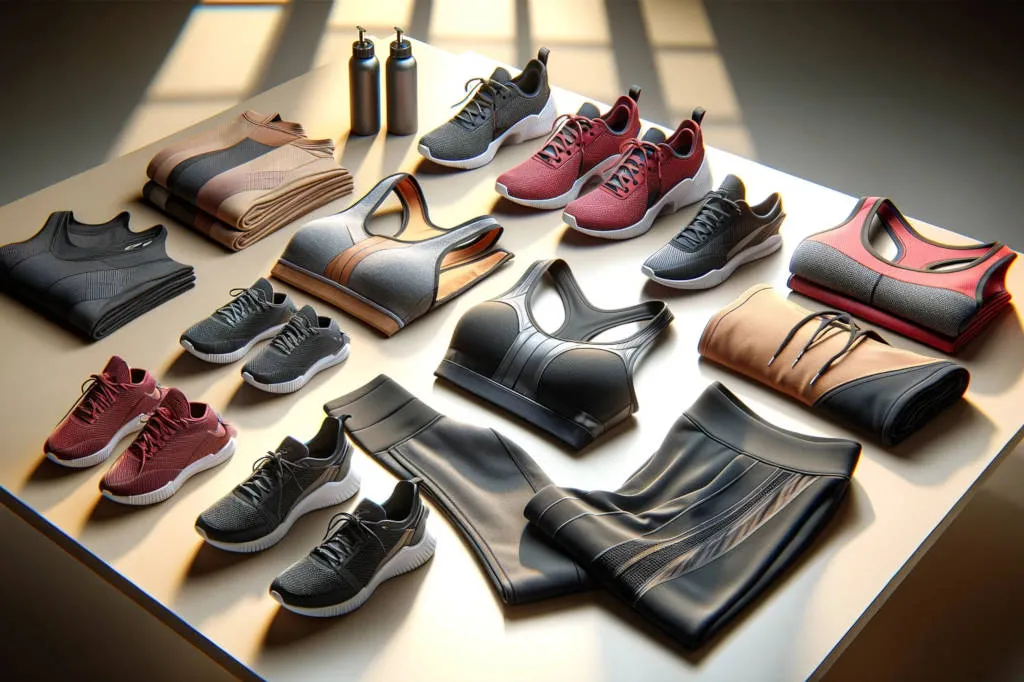
Investing in Quality:
Advantages:
- Durability: High-quality gym wear is typically designed to withstand the rigors of regular workouts, which means it’s less likely to tear, fade, or lose its shape.
- Enhanced Features: Premium gym clothing often comes with benefits like moisture-wicking technology, UV protection, or antibacterial properties.
- Fit and Comfort: Quality items are often better tailored, offering superior fit and comfort.
Drawbacks:
- Initial Cost: Investing in quality often means a higher upfront cost.
- Less Variety: With a focus on quality, you might end up with fewer outfits to rotate through.
Opting for Quantity:
Advantages:
- Variety: Purchasing more items often means having a broader selection of outfits to choose from.
- Flexibility: Wear and tear won’t feel as distressing since you didn’t invest as much in each piece.
- Trends: With a focus on quantity, you can more easily update your gym wardrobe with the latest trends without breaking the bank.
Drawbacks:
- Reduced Durability: Cheaper clothes might not last as long, requiring replacements more frequently.
- Comfort Issues: Budget-friendly options might not offer the best fit or comfort.
Conclusion:
It boils down to personal priorities. If you’re someone who values longevity and superior features in your gym wear, investing in quality might be the way to go. On the other hand, if you love variety and frequently updating your workout wardrobe, quantity might be more appealing. Remember, the ultimate goal is to feel good and confident in what you’re wearing, as it can significantly impact your motivation and performance at the gym.
Gym Etiquette and Attire
Going to the gym isn’t just about getting a good workout; it’s also about respecting the shared space and ensuring everyone feels comfortable. Part of this respect is reflected in how one dresses. By understanding the unwritten rules and etiquette, you can contribute to a positive environment for everyone involved.

Dress Code Basics:
- Functional Attire: Always wear clothing that supports the type of workout you’re doing. For example, if you’re lifting weights, avoid baggy clothing that could get caught in the equipment.
- Coverage: Opt for clothes that provide adequate coverage. While some gyms might be more lenient, it’s always respectful to ensure you’re not exposing more than what’s generally accepted.
Hygiene First:
Remember, sweat is inevitable. Wear moisture-wicking fabrics to manage sweat and reduce body odor. It’s also polite (and hygienic) to bring a towel to wipe down machines after use.
Footwear Rules:
Not only does wearing the right shoes protect your feet, but it also keeps gym floors clean and damage-free. Most gyms require closed-toe, non-marking shoes.
Avoid Over-Accessorizing:
Jewelry can be hazardous, especially during high-intensity workouts or weightlifting sessions. Keep it minimal and safe.
Branding and Logos:
While it’s perfectly fine to wear branded clothing, avoid overly flashy logos or slogans that might be deemed inappropriate or offensive.
Consider Others:
Loud prints or very bright colors might be distracting to some. While it’s essential to express oneself, consider toning it down if you notice it’s affecting others.
What to wear to the gym isn’t just about personal style or performance; it’s also about respecting the communal nature of the space. By adhering to a few basic etiquette guidelines, you ensure a positive, respectful atmosphere where everyone can focus on their fitness goals.
Conclusion
Navigating the world of gym attire is more than just a matter of fashion; it’s about understanding the intricacies of different workouts, respecting gym etiquette, and ensuring safety and optimum performance. Your clothing choices can influence your motivation, the quality of your exercise, and even how efficiently your muscles recover post-workout. As we’ve explored in this guide, what to wear to the gym requires a balance of functionality, comfort, and personal style. Remember, investing in the right gear is not just about longevity but also about enhancing your overall gym experience. Now that you’re equipped with this knowledge, you can approach your next gym session with confidence, knowing you’re dressed not just to impress but for success.
Call to Action
Ready to elevate your gym game? Take the next step by assessing your current workout wardrobe. Analyze each piece, determine its functionality, and consider its contribution to your overall fitness experience. Gradually phase out items that no longer serve their intended purpose and invest in high-quality gear that aligns with your workout goals and aesthetic preferences. Remember, the right attire not only boosts your confidence but also enhances your performance. So, revamp your gym wardrobe today and let your attire be a reflection of your fitness journey. Go ahead, make that commitment to yourself and see the transformation not just in the mirror, but also in how you feel during every workout session!
Keep these brands in mind when selecting your gym wear.
- Under Armour: Renowned for its innovative and high-performance sportswear, Under Armour offers a range of gym attire that caters to various fitness needs. The brand is particularly noted for its moisture-wicking fabrics and comfortable, durable designs that support a wide range of athletic activities. Under Armour’s gear is ideal for those who seek both functionality and style in their workout clothes.
- Gymshark: Known for its wide range of high-quality fitness wear, Gymshark has become a significant player in the athletic apparel industry, offering everything from running shorts to versatile fitness apparel suitable for various activities.
- Nike: A global leader in athletic apparel, Nike offers a range of technically advanced workout clothes. Their Dri-FIT technology is especially noteworthy for keeping you dry and comfortable during intense workouts.
Eager to make your gym sessions even more effective? Dive deeper into our other articles on workout routines, nutrition tips, and more to enhance your fitness journey. And remember, whether you’re a gym novice or a seasoned athlete, always prioritize comfort and safety in your attire choices. Share your favorite gym outfits with us on our social media channels – we’d love to see how you rock the gym with style and confidence!
Additionally, you’re invited to explore our collection of articles:





